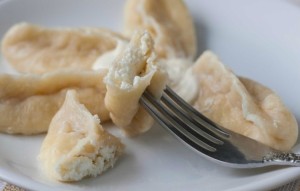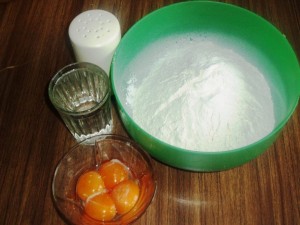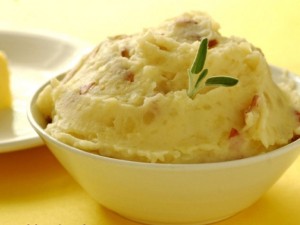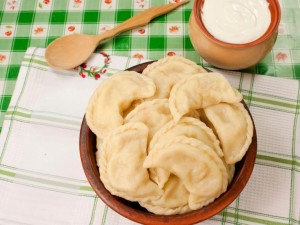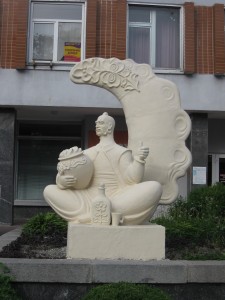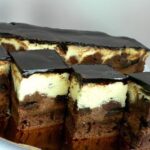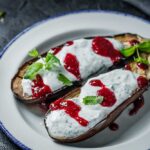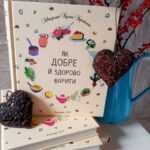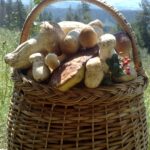Varenyky is a popular Ukrainian dish made of boiled dough with diverse fillings, such as meat, mushrooms, vegetables, fruits, cheese etc. Varenyky is not a festive dish, but their taste leaves no one indifferent. These Ukrainian dumplings can be the main course as well as the dessert.
Ukrainian varenyky history
The earliest known farmers in the Ukraine were the Trypillians (4500–2000 B.C. ). The territory of the Ukraine had rich soil and a favorable climate perfect for cultivating crops. The Trypillians grew barley, millet, rye, and wheat. They also herded sheep, pigs, and cattle. Wheat was plentiful, and soon trading routes were established along Ukraine’s Black Sea coast to market the grain. The Ukraine territory became the crossing road connecting Arabia, Europe, and Asia.
Ukrainians proudly kept their native traditions, customs, and cuisine.
The national dish of Ukraine that undeniably originates from the country is borsch. However, varenyky, holubtsi and salo are also considered national favorites of the Ukrainian people. Delicious and hearty Ukrainian dishes are widespread throughout the world. In Ukraine varenyky are not just a national dish, but also a special talisman. Ukrainian ancestors equated varenyk with a young moon since they have a similar form. Ukraine voraciously absorbed the recipes of German, Hungarian, Turkish and other countries cuisines.
Varenyky were made with usual for Ukrainians cottage cheese, sauerkraut, mashed potatoes, boiled beans, mushy peas, and fruits.
The name varenyky is nationwide, while the name “pyrohy” derives from Western Ukraine and has Galician roots.
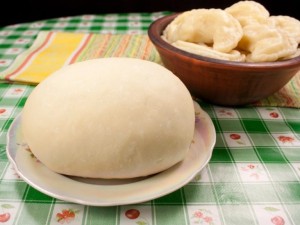 Vareniki in other countries
Vareniki in other countries
Vareniki are popular all over the world, but abroad they have other names, forms and fillings. In Russia they are called “pelmeni” and have only meat stuffing. Pelmeni are also smaller than vareniki and have the round shape.
In Italy there are ravioli, which are made of pasta dough with meat or cheese fillings and have mostly a square shape.
In Belarusian and Polish cuisines there are “kalduny”, which recipes are similar to Ukrainian varenyky recipe.
Varenyky in Ukrainian literature
An outstanding Ukrainian writer Mykola Hohol often mentioned varenyky in his novels. Born in the Cossack village Sorochyntsi, Poltava district, he was obsessed with Ukrainian cuisine, varenyky in particular. In his famous novel “Evenings on a Farm Near Dikanka” Hogol with fastidious attention described the way Paciuk swallowed his cheese varenyky with sour cream, while in his novel “Vii” the writer narrated about “giant” varenyky with the size of a hat and the diameter of 30-40 cm.
In “The Fair of Sorotchinetz” Mykola Hohol also mentioned his favorite dumplings. He described the scene when Aphanasi was eating unceasingly varenyky and groping simultaneously his Khavronia.
Popular Jewish poet Saul Chernikhivskyi who was living in Ukraine at the end of XIX – beginning of XX century, grew fond of traditional Ukrainian food so much that he devoted his poem and musical idyll to Ukrainian dumplings and called it “Varenyky.”
Varenyky dough recipe
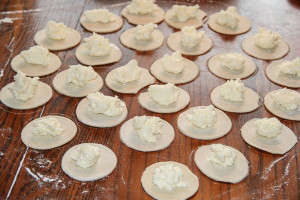 If you don`t know how to make vareniki dough, there are several variations of cooking, using mineral water, curdled milk or boiled water as the basic ingredient. Here is the classic and the most popular recipe for vareniki dough.
If you don`t know how to make vareniki dough, there are several variations of cooking, using mineral water, curdled milk or boiled water as the basic ingredient. Here is the classic and the most popular recipe for vareniki dough.
Ingredients:
- egg – 1;
- wheat flour – 320 g;
- water – 250 ml;
- salt – a pinch.
How to cook:
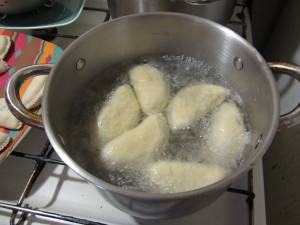 Put one cup of flour into the deep bowl. Add salt. Warm up water till 30-35 degrees and add it to the bowl. Beat up one egg. Mix all ingredients thoroughly.
Put one cup of flour into the deep bowl. Add salt. Warm up water till 30-35 degrees and add it to the bowl. Beat up one egg. Mix all ingredients thoroughly.
Add the second cup of flour and place the mixture on surface covered with flour. Knead the dough with your hands. If it is sticking add some flour.
Continue kneading the dough until it becomes elastic.
Cover kneaded varenyky dough with a bowl or kitchen towel and leave it for the “rest” for 40 minutes.
When the dough is ready, roll it out and using the special round shape or a cup cut out circles. Then place the filling in the center of each circle and tight up the edges. Put varenyky to the boiling water and boil for several minutes.
How to choose varenyky fillings
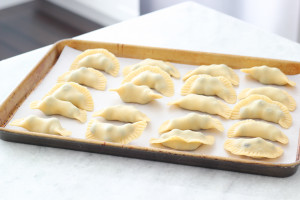 There is a great variety of varenyky fillings for any taste in Ukraine. They can be sweet or salty, spicy or sour, piquant or unleavened. The most popular fillings are:
There is a great variety of varenyky fillings for any taste in Ukraine. They can be sweet or salty, spicy or sour, piquant or unleavened. The most popular fillings are:
- meat;
- potatoes;
- cottage cheese;
- cherries;
Meat filling
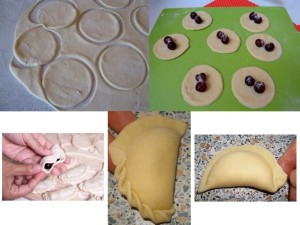 If you are searching for Ukrainian meat varenyky recipe you can use the dough recipe described below. To cook the meat filling you need such ingredients:
If you are searching for Ukrainian meat varenyky recipe you can use the dough recipe described below. To cook the meat filling you need such ingredients:
- chicken meat – 500 g;
- onion – 1;
- vegetable oil – 1 tbsp.;
- salt, pepper.
Boil chicken fillet or chicken quarter. If there are bones, take them away. Chop boiled meat with a knife or using meat grinder and add salt with pepper. Chop onion, fry it with vegetable oil, and then add to minced chicken meat.
Potato vareniki filling
- potato – 5-6;
- onion – 3;
- butter – 100 g;
- vegetable oil – 2 tbsp.;
- salt, pepper.
Boil potatoes for 20 minutes and then mash them. Chop onion and fry it finely on the hot pan with vegetable oil. Add fried onion, butter, salt and pepper to the mashed potatoes. Mix all ingredients.
Cottage cheese vareniki recipe depends on what dish you want to cook, a hot dish or a dessert.
There are two variants of cottage cheese varenyky fillings, sweet and salty.
Cottage cheese
There are two variants of cottage cheese varenyky fillings, sweet and salty.
Sweet cottage cheese filling
Ingredients:
- cottage cheese – 400 g;
- sugar – 2 tbsp.;
- egg – 1;
- butter – 50 g;
- salt – a pinch.
Mix cottage cheese with one egg, add sugar with salt. Melt butter and add to cheese mixture.
Salty cottage cheese filling
- cottage cheese – 400 g;
- salt – 1 tsp.;
- dill – a bunch.
Mash cottage cheese with salt. Chop dill and add to cheese mixture.
Ukrainian blueberry varenyky recipe is similar to recipe for cherry varenyky, as well as other berry filling recipes. The cooking technology is the same, so these two recipes can be unified.
Cherry (blueberry) vareniki filling
Ingredients:
- cherry (blueberry) – 500 g;
- sugar – 150 g;
- starch – 1 tbsp.
Remove kernels from berries (if there are any). Add sugar and starch, mix ingredients. Put two or three berries per one dumpling.
Interesting facts about Ukrainian varenyky
In Ukraine varenyky is not just a national dish, but also a special talisman. Many years ago Ukrainian peasants believed varenyky brought them abundant harvest, so they took their miraculous dumplings to the fields.
In the ancient Slavic period women used to eat varenyky on the second day of their wedding, as a symbol of wellbeing and wellness. Varenyky were also given as the medicine to pregnant women.
Varenyky (pierogi) have their own patron saint: “Święty Jacek z pierogami!” (St. Hyacinth and his pierogi!) is an old Polish expression of surprise, roughly equivalent to the English language “good grief” or American “holy smokes!”.
A monument to varenyky was inaugurated in Cherkasy, Ukraine in September 2006. The monument erected at the entrance to a hotel shows Cossack Mamay eating varenyky from an earthenware pot, with a huge crescent-shaped varenyk behind him.
A monument to halushky was inaugurated in Poltava, Ukraine in 2006. In 1991, a giant pierogi on a fork was erected in the village of Glendon in Alberta, Canada. The statue is 7.6 metres (25 feet) tall. In January 2010, a pierogi statue was proposed to be erected in Minneapolis, Minnesota.

